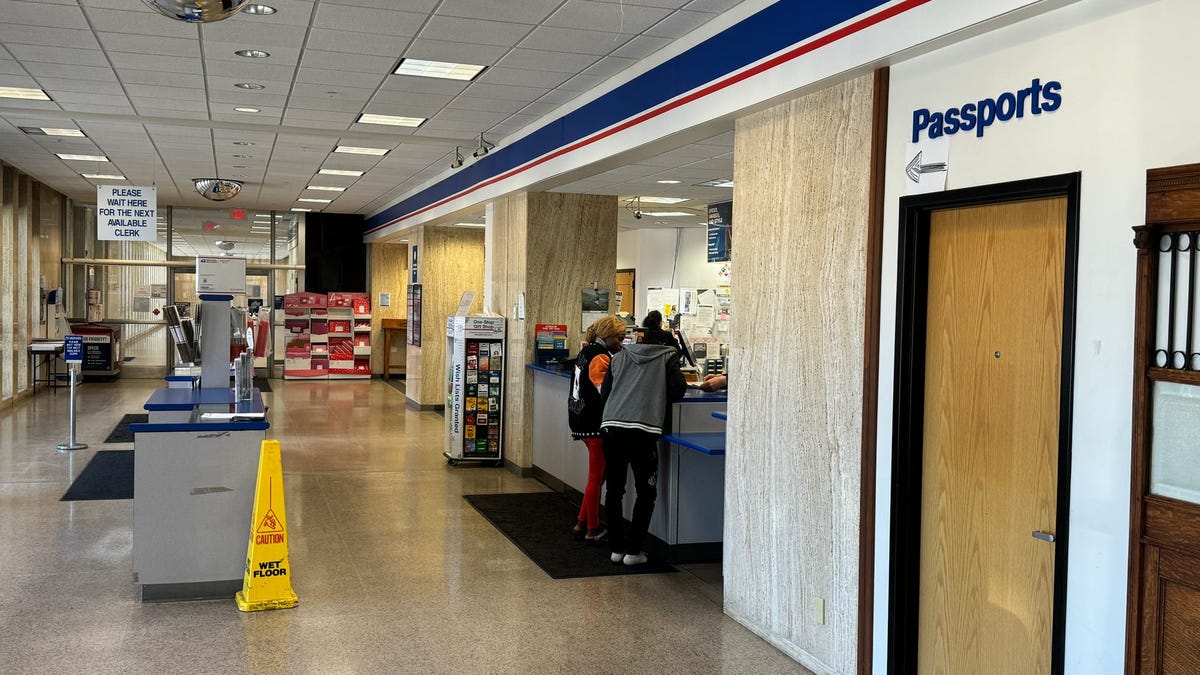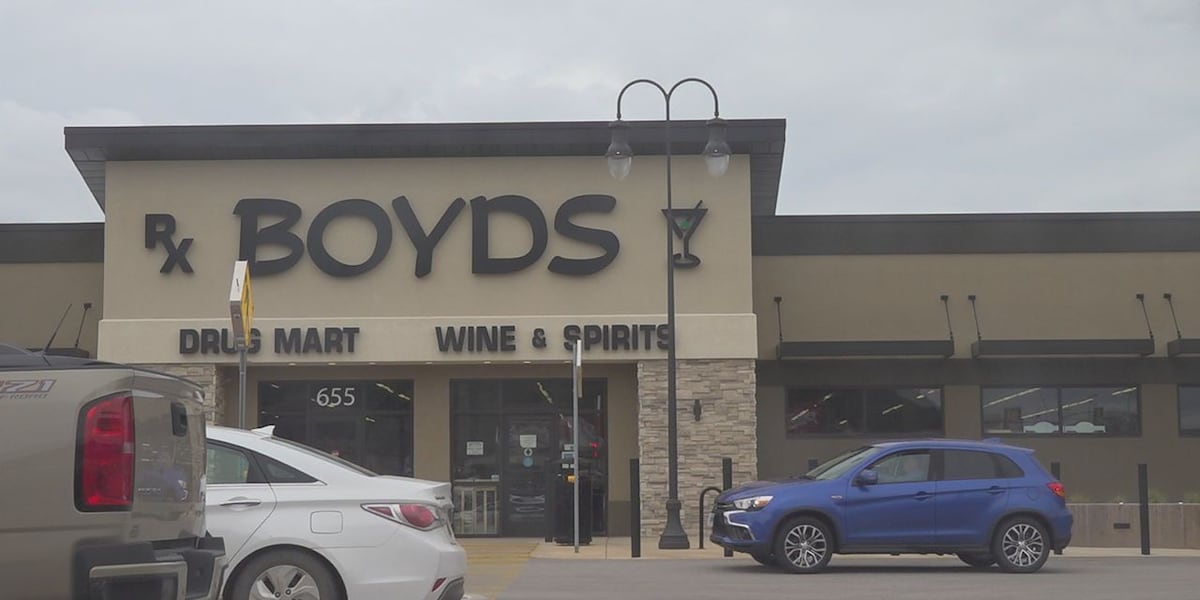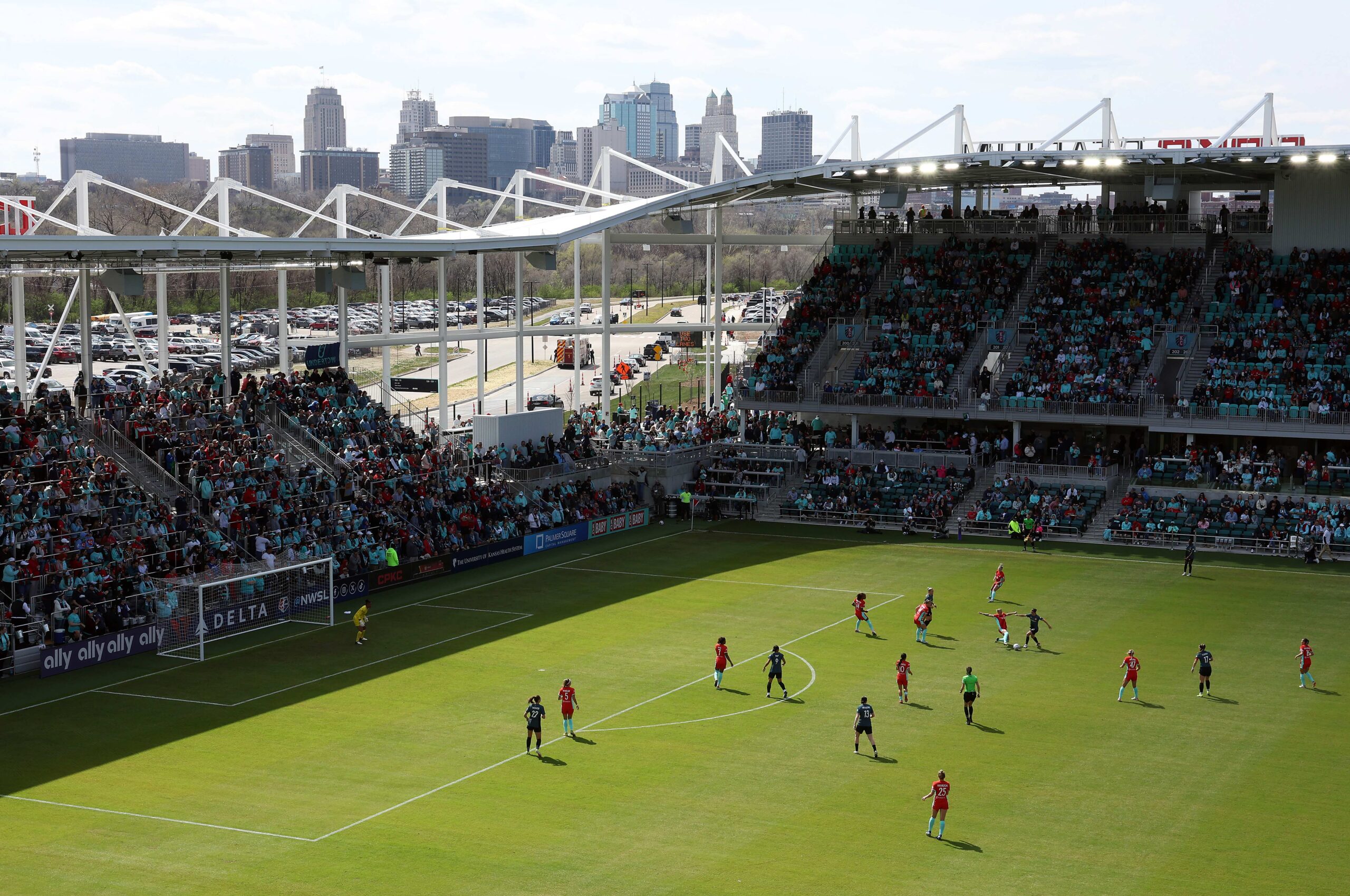South Dakota
USDA forecasts a record-setting year for South Dakota ag production

The United States Department of Agricultural forecasts an overall increase in crop production in South Dakota this year.
The USDA predicts a record year for corn production in the state. The department expects of 850 million bushels of corn. That is an increase of 28% percent over last year.
Doug Sombke is the President of South Dakota Farmers Union. He said a large yield in corn sometimes means less money for the farmer.
“It lowers the price the farmers are paid. Quite dramatically actually. Matter of fact, even the premiums that everyone expects from ethanol plants has gone down. I know elevators that are paying more than the ethanol plants right now,” said Sombke.
The USDA said soybean production in the state is up 15% percent from last year, with a yield forecast of 44 bushels per acre.
Keith Alverson farms corn and soybeans near Chester. He agrees with USDA’s positive forecasting but said it does not apply to every farmer.
“I think conditions across the state still varied. I know that there is certainly some areas of the state that didn’t have very good yields and really where hit hard with the drought. But, in our area, it was just the timeliness of the rains. We still were behind normal in rainfall, but the rainfall that we did have came at pretty opportune times for crop production. So that was really what set this year apart from last year,” said Alverson.
Sorghum is an often-overlooked grain that has become increasing popular among producers in the state. The USDA reports sorghum harvest acreage in the state has increased by almost 50% compared to 2022.
Alverson said a contributing factor to this rapid production of sorghum is drought. The crop performs better than others in dry conditions.
“I think folks might look to sorghum to replace corn in those acres, especially as you go to the central part of the state where droughts are a little more frequent. A way to diversify your crop production in the central part of the state,” said Alverson.
The USDA said sorghum production has grown in the state by over 70% percent since last year, with a forecast of 80 bushels per acre.

South Dakota
US Postal Service to downgrade South Dakota mail operations

The U.S. Postal Service has finalized its plan to downgrade the downtown Sioux Falls post office to a local processing center, shifting non-local mail operations to a facility in Omaha, Nebraska.
The reorganization, first introduced in January, has sparked concerns about slower mail delivery to rural communities because letters and packages formerly processed and sent from Sioux Falls will be routed through Omaha, 160 miles away.
USPS expects the change to impact 35 non-managerial jobs and three management positions in Sioux Falls. Those jobs are protected by union contracts, but the employees will likely have to shift to other facilities, said Todd West, president of the South Dakota chapter of the American Postal Workers Union.
In February, the USPS finalized a decision to downgrade its Huron facility to a local processing center, moving all non-local processing to Fargo, North Dakota.
“These moves are going to affect service,” West, who is based in Watertown, told News Watch. “If you want to mail something and you know it’s going to take three or four days to get there if you go through the post office, what are you going to do? You’re going to FedEx or UPS or another carrier.”
The Sioux Falls downtown facility is currently a processing and distribution center.
In a statement dated April 30, the USPS said that the Sioux Falls facility would remain open as a local processing center and will receive “up to $12.75 million in upgrades,” including upgraded sorting equipment, new lighting and renovated bathrooms and break rooms.
As for the reorganization, “the business case supports transferring mail processing outgoing operations to the (Omaha facility),” the statement read.
No timetable set for change
Mark Inglett, a USPS spokesman based in Kansas City, told News Watch that there is no current timetable for when the changes will take place.
Service times for first-class mail are already trending downward in South Dakota, Iowa and Nebraska, according to USPS data. The on-time rate for first-class mail for fiscal year 2024 is 81.4%, compared to 86.8% at the same time last year.
South Dakota Rep. Dusty Johnson told News Watch in a statement that the restructuring in Sioux Falls and Huron could affect delivery service and uproot employees.
“While the purpose of restructuring the Postal Service nationwide is to increase efficiency, in a state with significant rural populations like South Dakota, the change may decrease speed and efficiency,” Johnson said. “South Dakotans rely on timely service to get their news and pay their bills. Not to mention the dozens of positions that will be transferred out of state, forcing families to relocate or find another job.”
The reorganization is part of a $40 billion “Delivering for America” investment strategy spearheaded by Postmaster General Louis DeJoy, who was appointed by former President Donald Trump in June 2020.
It continues a trend from 2012, when the USPS closed processing centers in Aberdeen, Mobridge and Pierre, leaving South Dakota with facilities in Sioux Falls, Rapid City and Huron.
Postmaster general takes heat
The intent of the plan is to “upgrade and improve the USPS’s processing, transportation and delivery networks” in the face of changing mail habits and increased competition from package shipping companies.
In November 2023, the USPS announced it has lost $6.5 billion in the most recent fiscal year, despite its own projections that it would break even.
DeJoy cited inflation as a main cause of the poor performance and pointed to the ongoing restructuring as a positive step in turning things around.
“We are just in the early stages of one of the nation’s largest organizational transformations,” he said at the time.
The USPS on April 9 proposed an overall increase of nearly 8 percent on the price of postage, pending approval from a regulatory commission. Forever stamps would cost 73 cents instead of 68 cents under the proposal.
DeJoy was harshly criticized by U.S. senators at an April 14 oversight hearing that spotlighted mail delivery delays stemming from centralized USPS operations in the Atlanta area.
Democratic Sen. Jon Ossoff of Georgia cited statistics that showed on-time delivery rates of 36% and told DeJoy: “You’ve got weeks, not months, to fix this. And if you don’t fix it, I don’t think you’re fit for this job.”
‘Not changing service standards’
The postmaster general can only be removed from office by the USPS Board of Governors, whose chairman has shown support in the past for the “Delivering for America” strategy.
Under the proposed Sioux Falls plan, mail and packages destined for outside the immediate Sioux Falls area would be routed to Omaha and “aggregated with mail and packages from other areas going to the same places.”
“All they will be processing in Sioux Falls is mail for the 570 and 571 ZIP codes,” said West. “So if you drop a letter in the mailbox, whether it’s going to Sioux Falls, Brandon or Texas, it’s going to go down to Omaha. If it’s worked out down there that it’s going to Sioux Falls or Brandon, it’s going to come back to Sioux Falls and that’s when they’re going to process it.”
Some of the concerns about slower delivery have come from groups such as newspaper publishers who rely increasingly on mail delivery and pharmacies that send out prescriptions to customers.
USPS officials held a public input hearing March 13 in Sioux Falls, where they assured attendees that the Sioux Falls facility would not be closing and that no career employees would be laid off.
But Inglett’s statement that “we’re not changing our service standards” did not put minds at ease, including those of South Dakota’s congressional delegation.
Rep. Johnson joined Sens. John Thune and Mike Rounds in sending a letter to DeJoy on April 12 urging the USPS to “avoid downsizing or significantly reorganizing mail processing operations in states like South Dakota without considering the particular effects on rural areas.”
Less than three weeks later, USPS finalized the plan.
This story was produced by South Dakota News Watch, an independent, nonprofit news organization. Read more in-depth stories at sdnewswatch.org and sign up for an email every few days to get stories as soon as they’re published. Contact Stu Whitney at at stu.whitney@sdnewswatch.org.
South Dakota
Feeding South Dakota distribution on display in Redfield

REDFIELD, S.D. (Dakota News Now) – The non-profit Feeding South Dakota is a massive social service organization that serves each of the state’s 66 counties once a month.
Weather permitting, every South Dakota county gets a visit. The story, by the numbers, was provided by Stacey Andernacht of the Feeding South Dakota organization.
Stacey said, “In South Dakota, nearly 73,000 people are food insecure, and that means that they are unable to have access to the food that they need to have a nutritious lifestyle. Our mobile food distribution is hosted right now in 119 communities across the state, every single month.”
Funding is a big issue with these social service programs.
Stacey continued, “Feeding South Dakota is funded through private donations, along with some grant and foundation opportunities that we apply for. Other than the food items that we receive through the USDA commodity programs, we don’t receive any funding from the state.”
Thursday was the distribution event for Redfield in Spink County. Penny Ihnen is the Co-director of the Tri-County Food Pantry, and she talked about the impact of the program.
Penny related, “We’ve had people say that they couldn’t make it from month to month if it wasn’t for this mobile food truck that comes. It’s a blessing to them.”
Both Ihnen and Andernacht say that the Feeding South Dakota program wouldn’t exist without the incredible volunteers. Leonard Deibert, one of those volunteers, explained how he got started.
Leonard said, “The wife and I were walking down by the Armory one time when the Feeding South Dakota truck come there and they were helping the people and we walked over and asked them, ‘What’s going on?’ And they explained the program to us and we asked, ‘Well, do you need any help?’ and he said, ‘Sure, we can use help,’ and we’ve been going back and helping them probably three or four years now. We enjoy it, it’s a good program, and the people enjoy it.”
Occasionally, the weather gets in the way of this distribution but, for the most part, every county in South Dakota has one of the 119 stops on the Feeding South Dakota route.
Copyright 2024 Dakota News Now. All rights reserved.
South Dakota
South Dakota Housing launches homebuying assistance program for recent grads • South Dakota Searchlight

South Dakota Housing will launch its Grants for Grads program Friday, aiming to help college and technical-college graduates purchase their first home in South Dakota. The program is available “for a limited time.”
The program existed under former Gov. Dennis Daugaard’s administration in an effort to attract workers to the state, but ended in 2019, South Dakota Housing Director of Homeownership Programs Brent Adney told board members on Thursday.
“I wouldn’t be surprised if we had quite a few commitments right away,” Adney said.
Rapid rise in South Dakota home prices is ‘not sustainable,’ economist says
The timing is good, added Director of South Dakota Housing Chas Olson, and it’ll help first-time homebuyers enter the market.
Average first-time homebuyers can expect to spend about two-fifths of their pre-tax income on a monthly payment for a house in South Dakota, according to Dakota Institute research.
“Any kind of affordability relief we could provide is good at this time,” Olson told board members.
The program will also help with South Dakota’s workforce development initiatives, added Housing Development Authority Board President Scott Erickson.
“If someone graduated three years ago, moved to a major city and found that housing is really expensive, it would be the draw to bring them back,” Erickson said.
First-time homebuyers will be eligible if they’ve earned a degree from an accredited university or technical college in the last five years, select a South Dakota home costing $385,000 or less, and meet income requirements. According to Zillow, the median home sale price in South Dakota is $290,833.
Materials from the prior iteration of Grants for Grads said the program provided 5% percent of a participant’s loan amount as a grant to be used for a down payment or closing cost assistance.
Interested participants must contact a lender to set an appointment and apply for the program.
GET THE MORNING HEADLINES DELIVERED TO YOUR INBOX
-

 News1 week ago
News1 week agoLarry Webb’s deathbed confession solves 2000 cold case murder of Susan and Natasha Carter, 10, whose remains were found hours after he died
-

 World1 week ago
World1 week agoHaiti Prime Minister Ariel Henry resigns, transitional council takes power
-

 News1 week ago
News1 week agoFirst cargo ship passes through new channel since Baltimore bridge collapse
-

 World1 week ago
World1 week agoUS secretly sent long-range ATACMS weapons to Ukraine
-

 World1 week ago
World1 week agoSpanish PM Pedro Sanchez suspends public duties to 'reflect'
-

 News1 week ago
News1 week agoAmerican Airlines passenger alleges discrimination over use of first-class restroom
-

 Movie Reviews1 week ago
Movie Reviews1 week agoHumane (2024) – Movie Review
-

 Education1 week ago
Education1 week agoVideo: Johnson Condemns Pro-Palestinian Protests at Columbia University


















